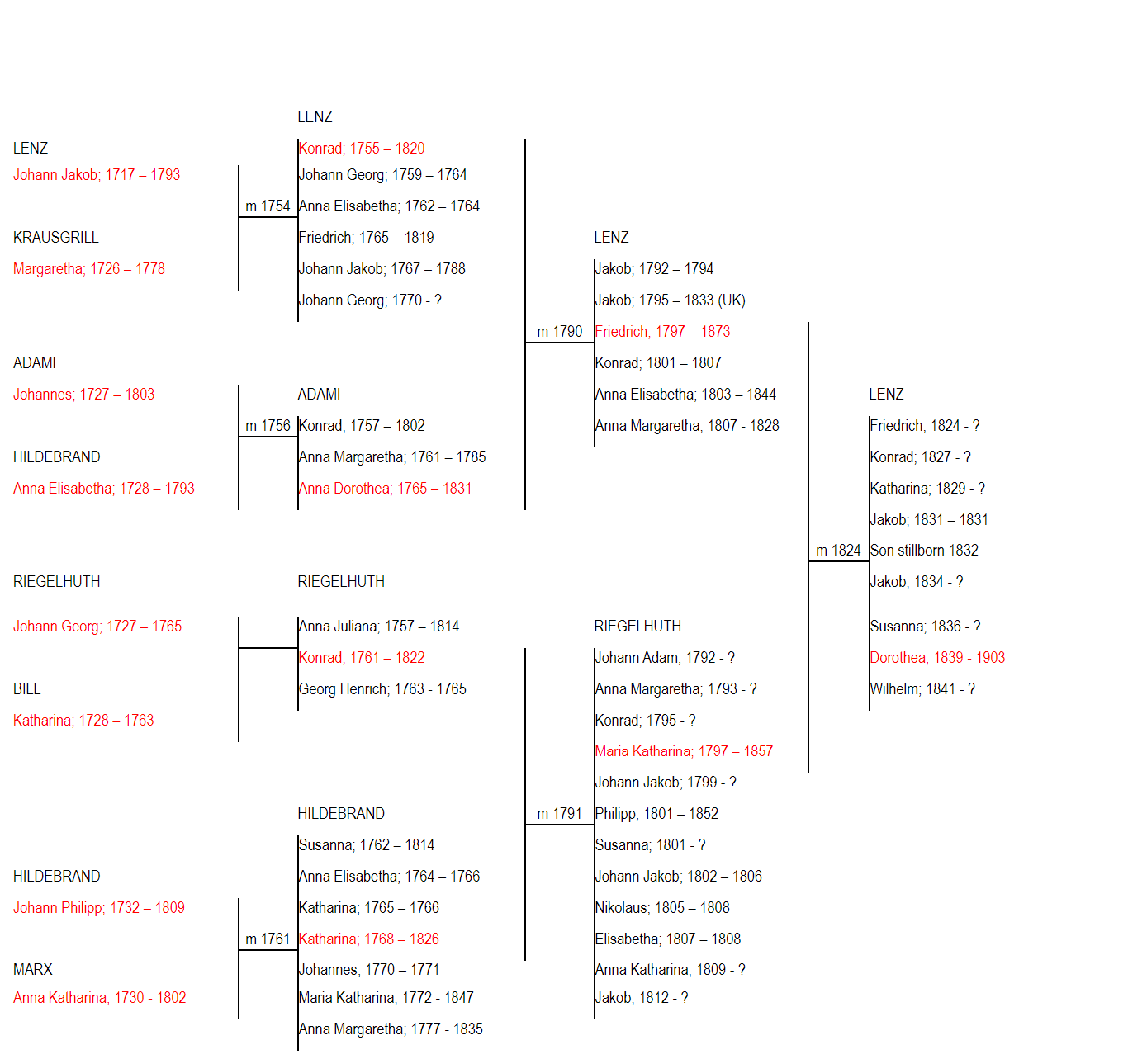Dorothea LENZ 1839-1903
Dorothea was born in Nieder-Weisel to Maria Katharina nee Riegelhuth, wife of Friedrich Lenz, two hundred years after her ancestor, Christen Lentz, had been appointed to the position of Burgermeister during the Thirty Years War. The six intervening generations had seen the family’s fortune wane to the extent that her father was a struggling farmhand. When Dorothea was born on 25th September 1839, five of the seven children previously born were living in the cramped confines of their small home, and a son born in 1841 brought to nine the total number of persons to be accommodated and maintained. Her father took on the additional job of grave-digger in an attempt to make ends meet.
In the over-crowded schoolroom, Dorothea received only the most basic education before going out to work after her confirmation on Whitmonday 1853. A very large group of 23 girls was prepared for the First Communion service this year and many would, like Dorothea, end their lives in Victoria. Some left the village as the exodus picked up momentum in 1856; Dorothea may have been amongst these but unfortunately the record of her movement has been lost. She was in Lang-Gons in November 1855 where she sponsored the illegitimate daughter of Konrad Lenz, her older brother. Some of her Lenz cousins emigrated in 1857; she may have come out at about this time, after her mother died in February.
Dorothea was one of the few migrants from Nieder-Weisel who went into Gippsland – the coach driver Konrad Hildebrand was another. In Sale, she met a young man who had been born to English parents in Hobart Town, Tasmania in 1838, George Green. They fell in love and were married in the Green’s home on 23rd November 1859. As a minor, Dorothea required the consent of her guardian; as this was given by the public guardian it is clear that none of her near relatives were in the area.
The coupled settled in Sale where, in their short time together they produced five children: Louisa Maria in 186O; Ann Eleanor, 1863; Amelia, 1864; George Frederick, 1866; and Alfred Henry in 1868. All of the children were born in Sale, in the family home. In September of 1868, Dorothea’s husband died a few months short of his 3Oth birthday. With five young children ranging in ages from eight to just a few weeks, Dorothea had to rely heavily on the support of her in-laws to get through the very difficult years that followed. Early in 1873, Dorothea married again. Her second husband was Henrich Konrad Christoph Horstmann, a German immigrant. There was a Frederick Horstmann in Sale at that time; he was from Hanover and had been in Tasmania, as the Greens had been. It may be that he was the godfather of Dorothea’s eldest son (although Frederick was a favoured Lenz name) as the Horstmanns and Greens had been friends for years. Dorothea and Henrich had only one child, a daughter born in 1873 and named after her mother.
Dorothea’s older children started to marry in 1885, and more than a dozen grandchildren had been born by the time her life ended in 19O3. She died, and was buried, in Maffra, 2O km north of Sale; both of her sons had settled there.
View Dorothea's Family Chart

